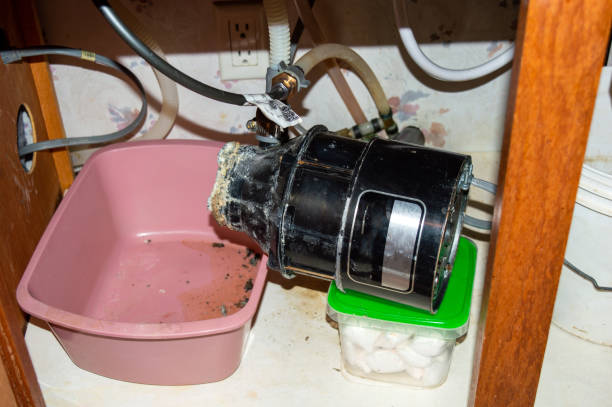When it comes to ensuring the comfort and well-being of your family in your home, choosing the right heating and ventilation system is crucial. One innovative solution that has been gaining popularity in recent years is Air-Heat Recovery. This system not only provides a cost-effective way to heat and ventilate your home but also offers numerous environmental benefits. In this blog post, we will delve into the importance of choosing Air Heat Recovery for your home and why it could be the perfect solution for your heating and ventilation needs.
Understanding the Basics of Air-Heat Recovery Systems
Air-Heat Recovery systems utilise a sophisticated heat exchanger mechanism to facilitate the transfer of heat from outgoing, stale air to incoming, fresh air. This ingenious process ensures the pre-heating of the fresh air before it permeates your home, thereby reducing the additional energy usually required to bring the air up to a comfortable temperature. Essentially, these systems capture and repurpose heat that would typically dissipate, making them exceptionally energy-efficient.
The core advantage lies in their ability to conserve energy that, under normal circumstances, would be lost to the outside, ensuring that your home remains warm without the hefty energy costs. This not only reduces the strain on your heating system but also contributes to a marked decrease in your household energy expenditure. By embracing this technology, homeowners can enjoy a cosy, well-ventilated environment that is both cost-effective and energy-efficient.
The Environmental Benefits of Fresh Air Heat Recovery Unit
The adoption of fresh Air Heat Recovery unit plays a pivotal role in promoting environmental sustainability. These innovative systems are at the forefront of eco-friendly heating and ventilation solutions, significantly minimising the energy required to maintain a comfortable temperature within your home. This reduction in energy consumption is instrumental in lessening your home’s environmental impact by curtailing greenhouse gas emissions that contribute to global warming.
Furthermore, the process of continuously replacing stale indoor air with filtered, fresh outdoor air enhances the overall air quality. This not only supports a healthier living environment but also aligns with broader efforts to reduce air pollution. By integrating an Air-Heat Recovery system into your home, you are taking a proactive step towards reducing your ecological footprint and contributing to a more sustainable future. The integration of such systems represents a commitment to environmental stewardship and a recognition of the urgent need to adopt more sustainable living practices.
How Air-Heat Recovery Can Save You Money
Incorporating an Air-Heat Recovery system into your home can be an astute financial decision over the long term. Despite the initial outlay being somewhat higher than conventional heating methods, the operational savings are where the true value becomes apparent. These systems are incredibly efficient at utilising the heat from exhaust air to warm incoming air, drastically reducing the demand on your heating system. As a result, you’ll notice a significant reduction in energy bills.
This efficiency translates into tangible financial savings, offering a return on investment that improves with time. The lower energy requirements help mitigate the volatile nature of energy prices, providing a buffer against future price increases. Additionally, the enhanced energy efficiency of your home may qualify for various government incentives and rebates, further offsetting the initial setup cost.
Another aspect to consider is the potential increase in property value. Homes with energy-efficient systems such as Air-Heat Recovery are becoming increasingly desirable, often commanding a higher market value. This makes the investment not only wise from a utility saving perspective but also from a real estate standpoint.
Investing in an Air-Heat Recovery system is thus not merely a commitment to reducing environmental impact but also a savvy financial strategy, reaping benefits in both savings and property value.
Enhancing Indoor Air Quality with Heat Exchange Ventilation System
One of the most significant advantages of Heat exchange ventilation system is their capability to markedly improve the air quality inside your dwelling. This enhancement in indoor air quality is achieved through a continuous cycle of exchanging the air within your home with fresh air from the outside. As the system operates, it meticulously filters out pollutants, allergens, and unpleasant odours from the incoming air, ensuring that the environment inside your home is not only comfortable but also healthier for its inhabitants. This process is particularly beneficial for individuals suffering from respiratory conditions or allergies, as it significantly reduces the presence of irritants in the air.
Moreover, the constant influx of fresh air helps to prevent the buildup of condensation and mould, common issues in many homes, which can cause damage to the structure of your house and potentially lead to health problems. By maintaining a steady flow of fresh, clean air, Air-Heat Recovery systems play a critical role in creating a living space that supports the wellbeing of you and your family, whilst also preserving the integrity of your home. The integration of such a system into your residence ensures a healthier living environment, free from the concerns of indoor air pollutants and moisture-related complications.
Air-Heat Recovery and Its Role in Modern Home Design
In the forefront of modern home design, Air-Heat Recovery systems have assumed a pivotal role, underpinned by an escalating emphasis on sustainability and efficiency within domestic settings. These systems not only epitomise the confluence of innovation and environmental stewardship but also cater to the burgeoning demand for homes that are both energy-efficient and comfortable. Their integration into contemporary architecture, be it through new constructions or retrofitting into existing structures, offers a tangible solution to the challenges posed by the need for sustainable living.
The adaptability of Air-Heat Recovery systems ensures that they can be effectively incorporated into a wide array of home designs, from minimalist urban dwellings to expansive rural homes, without compromising aesthetic integrity or spatial functionality. This harmonisation of technology with design aesthetics symbolises a forward-thinking approach to residential planning, where efficiency and sustainability are inextricably intertwined with the essence of home living. As architects and homeowners alike strive towards reducing carbon footprints and achieving greater energy independence, the adoption of Air-Heat Recovery systems signifies a conscientious move towards more responsible and innovative home design paradigms.
Choosing the Right Residential Energy Recovery Ventilator for Your Home
Selecting an appropriate residential energy Recovery ventilator for your dwelling necessitates a thoughtful consideration of various factors to ensure it perfectly aligns with your household’s unique requirements.
Spatial Dimensions
Initially, it is imperative to assess the spatial dimensions of your abode. The system’s capacity should be adequate to cater to the entire house, ensuring efficient heat recovery and air ventilation throughout. The number of residents plays a crucial role as well; a higher occupancy level typically demands a more robust system to accommodate the increased volume of air exchange.
Budget Considerations
Budgetary considerations are equally important. While the long-term savings on energy bills can be significant, the upfront cost of installation varies depending on the complexity of the system and the specific needs of your home. It’s beneficial to balance your immediate financial capacity with the potential long-term savings and environmental impact.
Consult with Professional
Consultation with a seasoned HVAC professional is advisable to navigate these considerations effectively. They can provide valuable insights into the most suitable models and configurations for your home, taking into account the local climate conditions and any specific architectural features of your property that might influence the system’s performance. Their expertise ensures that you invest in a system that not only meets your current needs but also accommodates future requirements, maximising both comfort and efficiency in your home.
The Installation Process Explained
The fitting of an Air-Heat Recovery system into your home requires a series of precise steps, undertaken by a skilled HVAC specialist. Key components including a heat exchanger unit, ductwork, and fans are integral to the setup. The professional responsible for the installation will meticulously configure these elements within your home’s infrastructure, ensuring that the system operates at peak efficiency. It’s crucial that this process is tailored to the specific layout and size of your dwelling to guarantee optimal functionality.
The technician will also carry out thorough testing post-installation to verify that the system is not only operational but also calibrated to meet your home’s heating and ventilation demands effectively. This stage is essential in making certain that the benefits of the Air-Heat Recovery system—energy efficiency, reduced heating costs, and enhanced indoor air quality—are fully realised. Engaging with a certified installer who possesses a deep understanding of Air-Heat Recovery technology is vital for a seamless integration into your home, setting the foundation for improved comfort and energy savings.
Maintenance Tips for Your Residential Heat Recovery Ventilator
Maintaining your residential heat Recovery ventilator is paramount to sustaining its efficiency and extending its service life. A crucial part of this routine is the regular inspection and cleaning or replacement of filters. Over time, filters can accumulate dust, pollen, and other airborne particles, potentially impeding airflow and diminishing the system’s efficiency. It is recommended to check these filters every few months and replace or clean them as necessary, depending on the model of your system and the manufacturer’s guidelines.
In addition to filter maintenance, it’s advisable to engage a professional HVAC technician for an annual review of your system. This check should encompass a comprehensive examination of the heat exchanger, fans, and ductwork for any signs of wear or blockages that could affect performance. The technician can also assess the system’s calibration, ensuring that it is optimally set to meet your home’s specific heating and ventilation requirements.
While some basic maintenance tasks can be performed by the homeowner, such as filter changes, more technical aspects, like inspecting the heat exchanger and fans, should be entrusted to professionals. Adhering to a regular maintenance schedule not only preserves the operational integrity of your Air-Heat Recovery system but also supports its role in providing a healthier, more energy-efficient home environment.
Conclusion
In the journey towards creating more sustainable and efficient homes, Air Heat Recovery systems emerge as pivotal innovations that not only enhance living conditions but also serve broader environmental goals. Their role in modern home design is increasingly becoming indispensable, reflecting a collective move towards energy independence and reduced environmental footprints. By considering the installation of an Air-Heat Recovery system, homeowners are not just investing in an efficient heating and ventilation solution; they are also contributing to a more sustainable future. The benefits, ranging from significant energy savings and improved indoor air quality to potential increases in property value, make a compelling case for their adoption.
FAQs
What exactly does a fresh Air Heat Recovery unit do?
A fresh Air Heat Recovery unit efficiently transfers warmth from the air leaving your home to the fresh, incoming air. This ingenious mechanism ensures the incoming air is warmed up before it enters your living spaces, significantly reducing the need for additional heating energy.
In what ways can an Air-Heat Recovery system lead to financial savings?
Thanks to its ability to utilise heat from exhaust air to warm incoming air, an Air-Heat Recovery system dramatically lessens the demand on your heating system, leading to a marked decrease in energy bills. Over time, the savings incurred from reduced energy consumption can offset the initial installation costs, making it a financially savvy choice.
How frequently is maintenance required for an Air-Heat Recovery system to perform at its best?
To ensure your Air-Heat Recovery system operates efficiently, it’s important to maintain it regularly. This involves checking and, if necessary, cleaning or replacing the system’s filters every few months, depending on usage and manufacturer recommendations. Additionally, an annual inspection by a qualified HVAC technician is recommended to ensure all components, such as the heat exchanger and fans, are in good working order and the system is optimally calibrated for your home’s specific needs.
| Related Business Listings |
| Contact Directory |
| Local Business Profiles |




